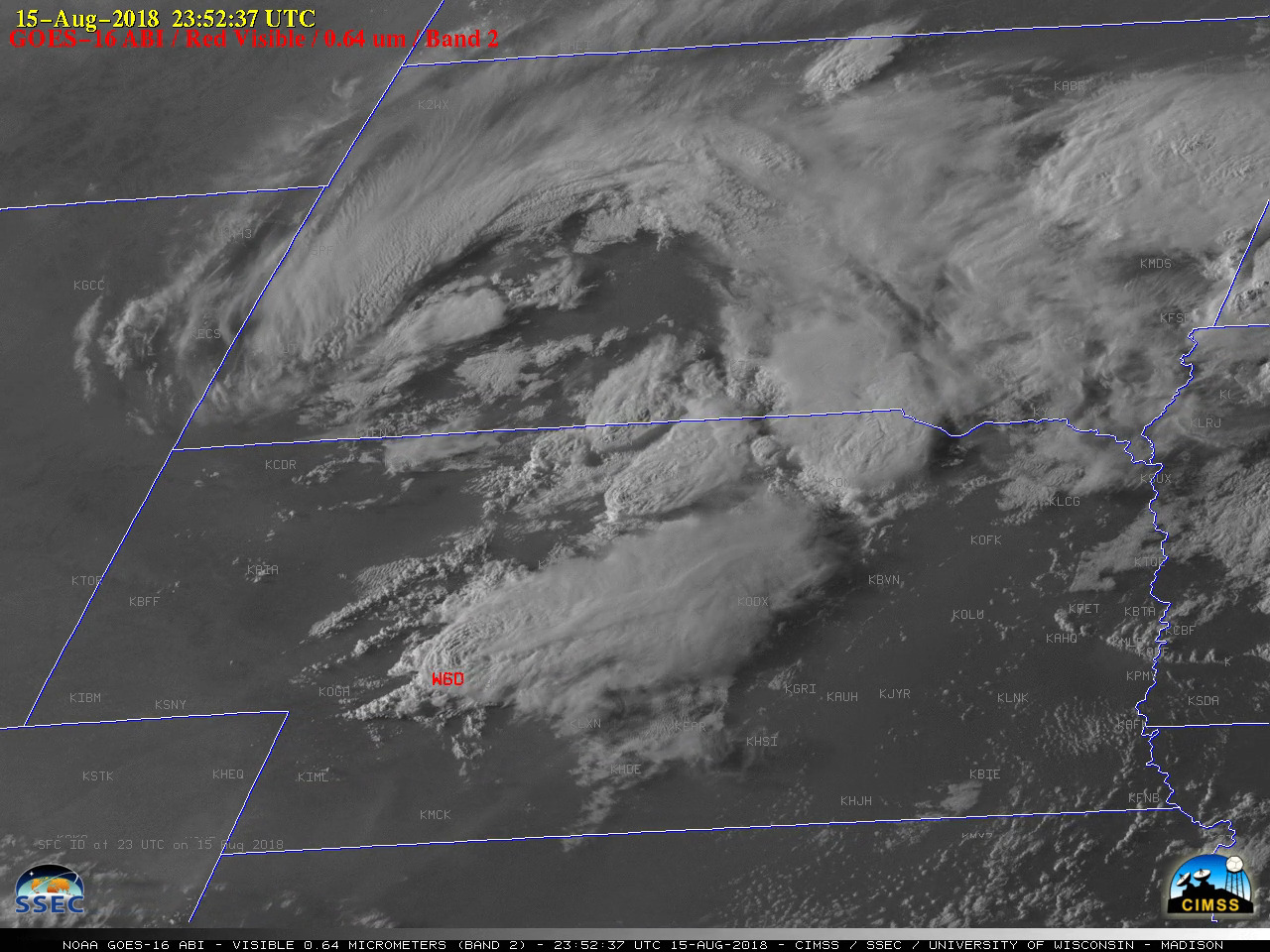
[ Archive ]

 |
CIMSS-NOAA Weekly Report [ Archive ] |
 |
ASPB AND CIMSS WEEKLY HIGHLIGHTS FOR THE WEEK ENDING AUGUST 17, 2018
IN THE PRESS:
ITEMS FOR THE ADMINISTRATOR:
ITEMS FOR THE ASSISTANT ADMINISTRATOR:
ITEMS FOR THE OFFICE DIRECTOR, STAR:
ITEMS FOR THE DIVISION CHIEF, CoRP:
Manuscript published in Frontiers in Environmental Science Special Issue: A manuscript entitled “The Dawn of Geostationary Air Quality Monitoring: Case Studies from Seoul and Los Angeles”, by Laura Margaret Judd, Jassim A. Al-saadi, Lukas C. Valin, R. Bradley Pierce, Kai Yang, Scott J. Janz, Matthew G Kowalewski, James J. Szykman, Martin Tiefengraber, and Moritz Mueller, was published in the “Non-meteorological Applications from New Generation Geostationary Imagers“ Special Issue of Frontiers in Environmental Science on August 15, 2018 (https://doi.org/10.3389/fenvs.2018.00085). The manuscript presents case studies illustrating the capabilities of the future integrated global atmospheric composition observing system to characterize urban pollution using airborne remote sensing measurements from the NASA Geostationary Trace gas and Aerosol Sensor Optimization (GeoTASO) instrument. GeoTASO is an airborne simulator for the NASA Tropospheric Emissions: Monitoring Pollution (TEMPO) funded by NASA's Earth Venture Instrument program. These case studies demonstrate the advantages of the unprecedented spatial and temporal resolutions that will be provided by TEMPO for monitoring urban pollution. (B. Pierce, E/RA2, 608-890-1892,brad.pierce@noaa.gov)
(Click image to enlarge)
Figure caption: Maps of GeoTASO nitrogen dioxide (NO2) tropospheric differential slant columns (TDSCs) over the LA Basin on June 27th, 2017. The upper panels (A,B) show Raster 1 from 08:30 to 10:00, the middle panels (C,D) show Raster 2 from 12:15 to 13:45 LT and the lower panels (E,F) show Raster 3 from 16:45 to 18:15 LT. The right panels show the full resolution (750 × 750 m) GeoTASO NO2 columns, whereas the left panels show GeoTAOS NO2 columns binned to 3 × 3 km spatial resolution to approximate the spatial resolution of TEMPO. Overlaid are the boundary layer averaged wind vectors (white arrows) from the NAM-CONUS 3-km nest analysis. This case study demonstrates that high spatial and temporal resolution TEMPO measurements will be able to monitor the effects of high automobile emissions during the morning rush hour (panels A,B), which due to weak winds leads to high NO2 columns over major interchanges (panels A,B), and the afternoon sea breeze transport of central LA emissions (panels C,D) into the eastern part of the LA Basin (panels E,F).
SSEC and CIMSS Scientists in the News: SSEC and CIMSS Scientists in the News: Scientists at the University of Wisconsin-Madison (UW) Space Science and Engineering Center (SSEC) and the Cooperative Institute for Meteorological Satellite Studies (CIMSS) provide expert commentary, interviews, and imagery to news media. In the news this week: 1) SSEC News published the recorded presentations from the Henry E. Revercomb Symposium on July 23-23: https://www.ssec.wisc.edu/news/articles/11197. The conference celebrated Revercomb’s achievements and contributions to the Earth and planetary sciences, as well as his leadership on an intricate lineage of satellite-, aircraft,- and ground-based instruments. 2) CIMSS Satellite Blog contributors Scott Bachmeier and Scott Lindstrom published posts on the "Stereoscopic view of Severe Convection over Nebraska" (August 16), "Severe thunderstorms in South Dakota and Nebraska" (August 15), "Carr Fire in northern California" (August 11), "Wildfire smoke across the Midwestern US" (August 11). Read more at the CIMSS Satellite Blog: http://cimss.ssec.wisc.edu/goes/blog/.(J. Phillips, SSEC, 608-262-8164, S. Bachmeier, CIMSS, S. Lindstrom, SSEC)
 (Click image to enlarge)
(Click image to enlarge)
Figure caption: GOES-16 “Red” Visible (0.64 µm) images showed the development of thunderstorms in southwestern South Dakota and western/central Nebraska on August 15, 2018. SPC storm reports are plotted in red. The animation is available here: https://go.wisc.edu/5e8hg7. Credit: CIMSS.
In the Press: A new audio book, "The Coming Storm", by Michael Lewis was recently published. Former NOAA administrator Kathy Sullivan, the first American women in space, is highlighted; T. Schmit is quoted. A review from the Washington Post: https://www.washingtonpost.com/entertainment/books/michael-lewiss-latest--available-only-as-an-audiobook--offers-a-severe-weather-warning/2018/08/02/43b6d078-95b0-11e8-a679-b09212fb69c2_story.html. Michael Lewis is the author of "The Big Short", "Moneyball" and "The Blind Side". The download is apparently free if it is your first Audible audiobook: https://www.amazon.com/The-Coming-Storm/dp/B07FHLQ2DD (T. Schmit, E/RA2, 608-263-0291)
 (Click image to enlarge)
(Click image to enlarge)
Figure caption: Book cover for "The Coming Storm" by Michael Lewis.
VISITORS:
NEXT WEEK:
LOOKING AHEAD:
| Archived Weeklies Page | Submit a report item |